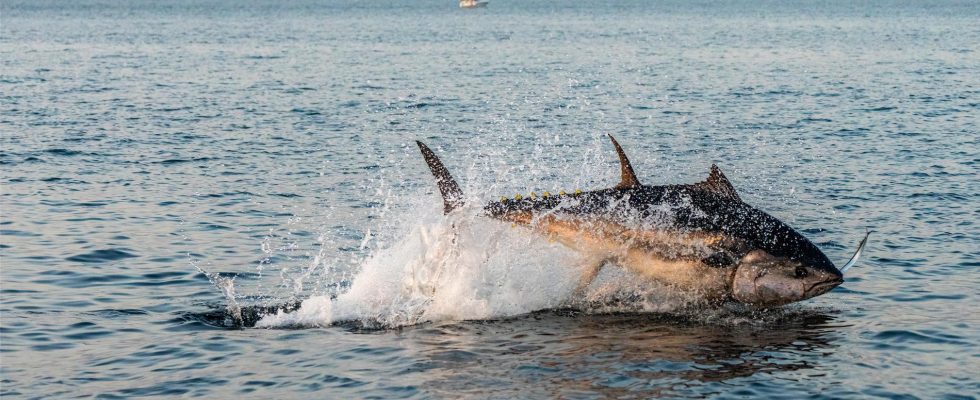Anna Karolina Eriksson/TT
It thrives and happily jumps over the surface of the water. Öresund has become a haunt for the formerly outfished bluefin tuna.
– I have never experienced so much tuna before, says marine biologist Jens Peder Jeppesen at the Öresund aquarium in Helsingör.
The Atlantic bluefin tuna – formerly very rare and fished out – is back in the Sound. For a couple of years, more and more people have noticed how the silvery giant dances above the surface of the water in the strait.
August and September are high season, and this year there are more than ever, says Jens Peder Jeppesen enthusiastically.
– It is very spectacular to see so many big fish!
– It is the big tuna that come back to Öresund, weighing over 200 kilos up to 500 kilos.
These are not small tuna – and they are looking for herring, mackerel and pike, which, according to the Öresund Aquarium, also appeared in large quantities in August.
The tuna began to reappear in the late summers, after being absent from the Sound for around 55 years due to, among other things, large-scale fishing.
Today it is protected in Swedish and Danish waters, and no fishing may be conducted after it. The return in our waters is due, among other things, to reduced fishing pressure in the Mediterranean combined with migrations of prey fish, mainly herring and mackerel.
Those who want to see tuna have good chances in August, September and October.
– For those who live in Helsingborg and Helsingör, it has become like a tradition to see the tuna dancing, says Jens Peder Jeppesen.
FACT Bluefin tuna
The bluefin tuna (Thunnus thynnus) is found in the North Atlantic and North Pacific, and migrates long distances. The tuna can visit the Skagerrak, Kattegatt and Öresund between late summer and early autumn.
The fish can be very large, one to three meters long and weigh several hundred kilos. The largest known specimens weighed over 900 kg and were around five meters long.
Recreational fishing for the species is prohibited – also in other countries’ waters in the Skagerrak, Kattegat and the Baltic Sea.
Source: The Norwegian Sea and Water Authority
Read more
